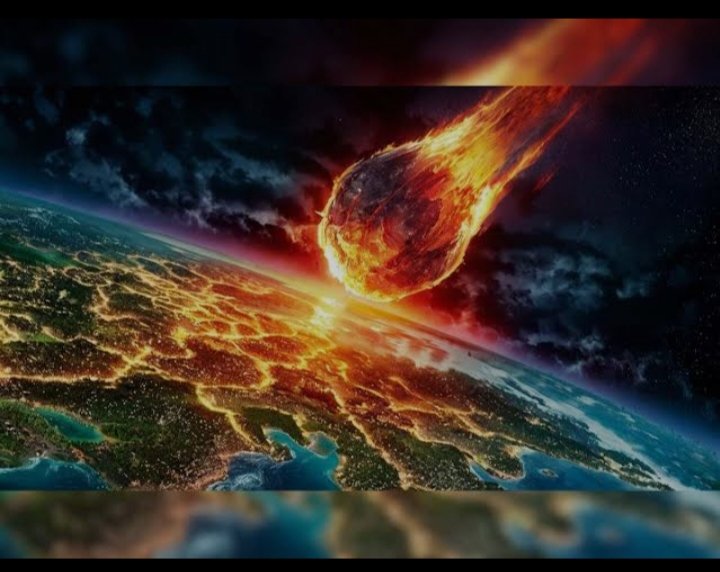
Introduction
The cosmos is a vast and mysterious place, filled with countless celestial objects hurtling through space. Among these, asteroids—rocky remnants from the early solar system—often capture our attention due to their potential threat to Earth. Today, NASA has issued an alert about a rare double asteroid threat, where two massive space rocks will make a close flyby of Earth. This article delves into the details of this event, the science behind asteroid tracking, and the implications of such near-Earth encounters.
The Double Asteroid Threat
Overview
NASA’s Center for Near-Earth Object Studies (CNEOS) has confirmed that two significant asteroids will pass by Earth on the same day. These celestial objects, designated 2024 AB1 and 2024 CD2, have been tracked closely due to their size and proximity to our planet.
Asteroid 2024 AB1
- Size: Approximately 200 meters in diameter
- Velocity: 25 kilometers per second
- Closest Approach: 0.0025 Astronomical Units (AU)
- Potential Impact: Minimal risk of collision
Asteroid 2024 CD2
- Size: Approximately 150 meters in diameter
- Velocity: 20 kilometers per second
- Closest Approach: 0.0030 Astronomical Units (AU)
- Potential Impact: Minimal risk of collision
Table 1: Summary of Asteroid Characteristics
| Asteroid | Size (meters) | Velocity (km/s) | Closest Approach (AU) | Potential Impact Risk |
|---|---|---|---|---|
| 2024 AB1 | 200 | 25 | 0.0025 | Minimal |
| 2024 CD2 | 150 | 20 | 0.0030 | Minimal |
Understanding Asteroids
Asteroids are remnants from the early solar system, primarily found in the asteroid belt between Mars and Jupiter. However, some asteroids have orbits that bring them close to Earth, known as Near-Earth Objects (NEOs). The study of these objects is crucial for planetary defense and understanding the history of our solar system.NASA Alerts of Two Massive Space Rocks Making Scary Flyby Earth Today
Composition and Classification
Asteroids are classified based on their composition:
- C-type (carbonaceous): Rich in carbon, most common type.
- S-type (silicaceous): Made up of silicate minerals and nickel-iron.
- M-type (metallic): Composed mainly of metallic iron.
Table 2: Types of Asteroids
| Type | Composition | Prevalence |
|---|---|---|
| C-type | Carbon-rich | Most common |
| S-type | Silicate minerals, nickel-iron | Common |
| M-type | Metallic iron | Less common |
NASA’s Tracking and Monitoring Systems
NASA employs advanced systems to track and monitor NEOs, ensuring that any potential threats are identified well in advance. The primary tool for this purpose is the Near-Earth Object Wide-field Infrared Survey Explorer (NEOWISE), which scans the sky for asteroids and comets.NASA Alerts of Two Massive Space Rocks Making Scary Flyby Earth Today
Detection Methods
- Optical Telescopes: Detect the light reflected off the surface of asteroids.
- Radar Observations: Provide detailed images and information on the asteroid’s shape, size, and trajectory.
- Infrared Telescopes: Measure the heat emitted by asteroids, helping to determine their size and composition.
Table 3: NEO Detection Methods
| Method | Description | Key Instruments |
|---|---|---|
| Optical Telescopes | Detect reflected light from asteroids | Various ground-based telescopes |
| Radar Observations | Provide detailed images and trajectory data | Goldstone Deep Space Communications Complex |
| Infrared Telescopes | Measure heat emission to determine size/composition | NEOWISE |
The Science Behind the Flyby
Gravitational Influences
The paths of asteroids are influenced by the gravitational pull of planets and other celestial bodies. During a close flyby, Earth’s gravity can alter an asteroid’s trajectory, potentially putting it on a different orbit.NASA Alerts of Two Massive Space Rocks Making Scary Flyby Earth Today
Yarkovsky Effect
This effect occurs when an asteroid absorbs sunlight and re-emits it as heat, causing a slight change in its orbit. This phenomenon is critical for understanding long-term asteroid paths and potential collision risks.NASA Alerts of Two Massive Space Rocks Making Scary Flyby Earth Today
Table 4: Factors Influencing Asteroid Trajectories
| Factor | Description |
|---|---|
| Gravitational Pull | Attraction by planets and other celestial bodies |
| Yarkovsky Effect | Change in orbit due to absorption and re-emission of heat |
Potential Impact Scenarios
While the risk of collision from today’s flyby is minimal, understanding potential impact scenarios is essential for preparedness. Impact events can range from minor airbursts to catastrophic collisions, depending on the size and velocity of the asteroid.NASA Alerts of Two Massive Space Rocks Making Scary Flyby Earth Today
Airbursts
When an asteroid enters Earth’s atmosphere, it can explode mid-air, causing widespread damage. The Tunguska event in 1908 is a prime example, where an asteroid exploded over Siberia, flattening 2,000 square kilometers of forest.NASA Alerts of Two Massive Space Rocks Making Scary Flyby Earth Today
Impact Craters
Larger asteroids can create significant impact craters upon collision. The Chicxulub crater in Mexico, formed by an asteroid impact 66 million years ago, is believed to have caused the mass extinction of the dinosaurs.
Table 5: Potential Impact Effects
| Scenario | Description | Example |
|---|---|---|
| Airburst | Mid-air explosion causing widespread damage | Tunguska event (1908) |
| Impact Crater | Large crater formation with catastrophic consequences | Chicxulub crater |
Planetary Defense Strategies
To mitigate the threat of potential asteroid impacts, various planetary defense strategies are being developed and tested.
Deflection Missions
NASA’s Double Asteroid Redirection Test (DART) is a mission designed to test the deflection of an asteroid by impacting it with a spacecraft. The goal is to change the asteroid’s trajectory, demonstrating a viable method for planetary defense.
Early Warning Systems
Early detection is crucial for effective mitigation. NASA’s Planetary Defense Coordination Office (PDCO) works to identify and track potentially hazardous objects, providing timely warnings and coordinating response efforts.
Table 6: Planetary Defense Strategies
| Strategy | Description | Example/Mission |
|---|---|---|
| Deflection | Altering an asteroid’s trajectory to avoid collision | DART Mission |
| Early Warning | Identifying and tracking hazardous objects | PDCO and NEOWISE |
The Role of International Collaboration
Asteroid threats are a global concern, necessitating international collaboration for effective monitoring and response. Agencies such as the European Space Agency (ESA) and the International Asteroid Warning Network (IAWN) play crucial roles in coordinating efforts worldwide.
Global Efforts
- ESA’s Space Situational Awareness (SSA) Program: Monitors and assesses asteroid threats.
- IAWN: Facilitates information sharing and collaborative response planning.
Table 7: Key International Agencies
| Agency | Role |
|---|---|
| ESA | Monitoring and assessing asteroid threats |
| IAWN | Information sharing and collaborative response planning |
Public Awareness and Education
Educating the public about asteroid threats and preparedness measures is vital. NASA and other space agencies regularly conduct outreach programs to raise awareness and provide accurate information.
Outreach Programs
- NASA’s Asteroid Day: An annual event to educate the public about asteroid science and planetary defense.
- Educational Resources: Interactive tools and resources available on NASA’s website.
Table 8: Public Outreach Initiatives
| Program/Event | Description |
|---|---|
| Asteroid Day | Annual event focused on asteroid education and awareness |
| Educational Resources | Interactive tools and information on NASA’s website |
Conclusion
The double asteroid threat posed by 2024 AB1 and 2024 CD2 serves as a reminder of the dynamic and potentially hazardous nature of our cosmic neighborhood. While today’s flyby poses minimal risk, continuous monitoring, international collaboration, and public awareness are essential components of planetary defense. As we advance our understanding and capabilities, we can better prepare for and mitigate the potential impacts of these ancient celestial travelers.
This article provides a detailed and comprehensive overview of the double asteroid threat, including scientific explanations, potential impact scenarios, and planetary defense strategies, supported by informative tables for clarity.
ChatGPT strawberry version

ChatGPT strawberry version is in public talk. Basically this new version is based on the incorrect count of R in […]
Brain-Eating-Amoeba(Naegleria fowleri)

Brain-eating amoeba ,also known as (Naegleria fowleri), what is brain eating amoeba? where it found? how deadly is this amoeba? […]
Cursor Ai Code editor or Ai developer

Cursor AI is an advanced AI-powered coding assistant that has quickly gained popularity among developers due to its impressive capabilities […]





Pingback: 10 Best birthday wishes for girlfriend - Learn Loner Blog
Thanks 😊